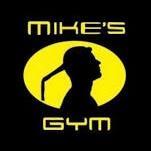My first automatic movement - feedback appreciated!
-
Recently Browsing
- No registered users viewing this page.
-
Topics
-
Posts
-
If anyone can help he out with a repivot please DM me and we can talk.
-
By Willem1961 · Posted
Hello WRT members my name is Willem I am from the Netherlands I haven’t been around a lot on the forum but did asked some advice in the past which helped me a lot. I started 4 years ago with a seiko 5m42-0e69 I inherited from my father. I could wair it because the bracelet was to small. Seiko did not had spare rubber inserts any more so I had to find donor watches but unfortunately also these rubber bands didn’t last long so had to find another I but this seems to be a original SLQ003 watch strap full length and uncut also found out this strap isn’t produced anymore. Than I came to the idea to find someone who can 3D print the straps and it work out well for me and than the journey began for me. This first picture is how I started 4 years ago. I ended up like this. I found all the 0e60/69 different faces and than started to collect all the different 0e39 faces. So now I can close this chapter. From another angle. Not all the faces are shown in 1998 catalog Here you can see all different faces. -
As requested - tricky to get a clear image of the holes, but you get the idea. Notice the new crystal, another first for me, it's amazing what a new crystal does for an old watch! Oh, and the other bit I'm proud of from an 80y old watch: And photos of the movement too if interested...
-
By nickelsilver · Posted
It's a pinion, so no chance of finding one separate from the wheel. Definitely less work to repivot than make a new pinion! (I generally make the whole staff for a balance of pallet fork rather than repivot though.)
-







Recommended Posts
Join the conversation
You can post now and register later. If you have an account, sign in now to post with your account.
Note: Your post will require moderator approval before it will be visible.